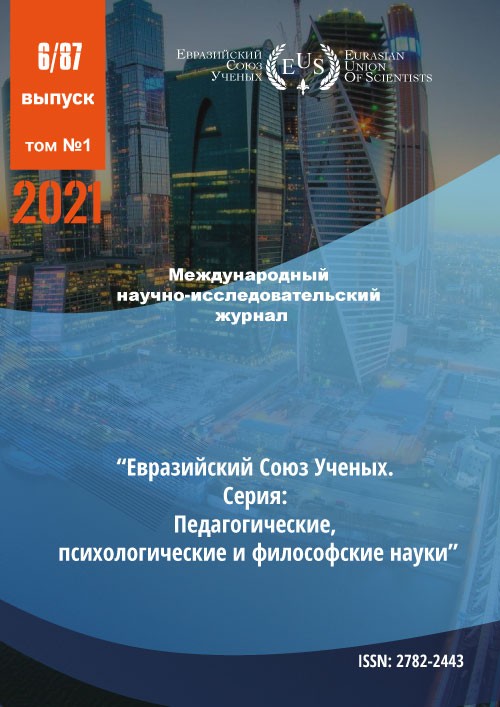INTERACTION BETWEEN TEACHERS AND PARENTS IN AESTHETIC EDUCATION OF LEARNERS
Keywords:
aesthetic education, preschool age, interaction
Abstract
The article focuses on the role of aesthetic education in preschoolers’ individual development. It examines some aspects of dealing with aesthetic education of learners through interaction between teachers and parents.
References
1. Dildebaeva, G. A. Rol narodnyh tancev v esteticheskom vospitanii / G. A. Dildebaeva // Materialy mezhdunarodnoj nauchno-prakticheskoj konferencii «Innovacionnye yavleniya v sovremennoj kulture Kazahstana». Almaty, 2008. – S. 311-317.
2. Lihachev, B. T. Teoriya esteticheskogo vospitaniya shkolnikov : uchebnoe posobie po speckursu dlya studentov ped. in-tov. M.: Prosveshenie, 2005. – C. 176.
3. Ob utverzhdenii Federalnogo gosudarstvennogo obrazovatelnogo standarta doshkolnogo obrazovaniya: prikaz Minobrnauki Rossijskoj Federacii ot 17.10.2013 g. № 1155 // Vestnik obrazovaniya. – 2013. – No 24. – S. 3-32. 4. Suhomlinskij, V. A. Serdce otdayu detyam. Kiev : Radyanska shkola, 1974. – 288 s.
2. Lihachev, B. T. Teoriya esteticheskogo vospitaniya shkolnikov : uchebnoe posobie po speckursu dlya studentov ped. in-tov. M.: Prosveshenie, 2005. – C. 176.
3. Ob utverzhdenii Federalnogo gosudarstvennogo obrazovatelnogo standarta doshkolnogo obrazovaniya: prikaz Minobrnauki Rossijskoj Federacii ot 17.10.2013 g. № 1155 // Vestnik obrazovaniya. – 2013. – No 24. – S. 3-32. 4. Suhomlinskij, V. A. Serdce otdayu detyam. Kiev : Radyanska shkola, 1974. – 288 s.
Published
2021-07-10
How to Cite
Shevtsova , M. 2021. “INTERACTION BETWEEN TEACHERS AND PARENTS IN AESTHETIC EDUCATION OF LEARNERS ”. EurasianUnionScientists, July, 27-30. https://doi.org/10.31618/ESU.2413-9335.2021.1.87.1402.
Section
Article
CC BY-ND
A work licensed in this way allows the following:
1. The freedom to use and perform the work: The licensee must be allowed to make any use, private or public, of the work.
2. The freedom to study the work and apply the information: The licensee must be allowed to examine the work and to use the knowledge gained from the work in any way. The license may not, for example, restrict "reverse engineering."
2. The freedom to redistribute copies: Copies may be sold, swapped or given away for free, in the same form as the original.





